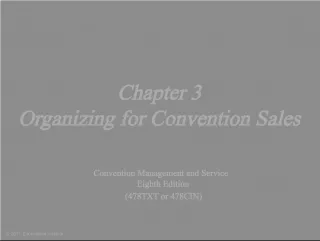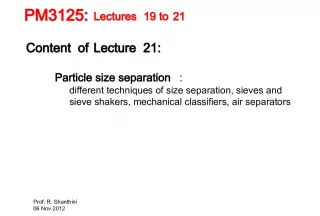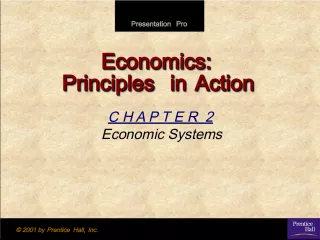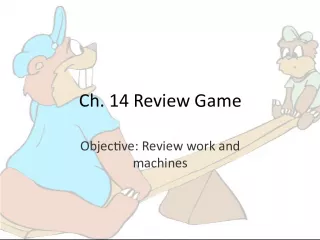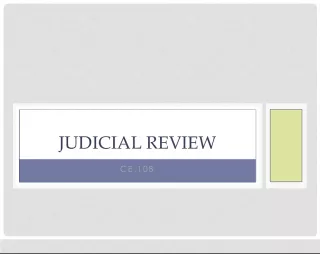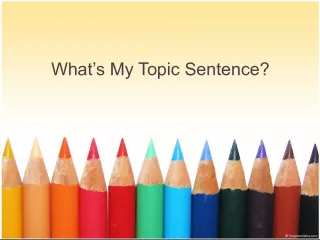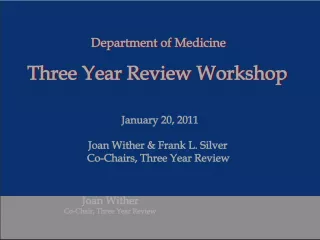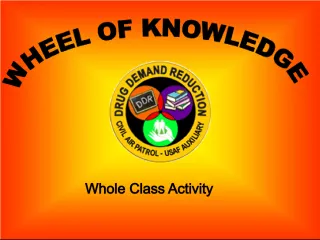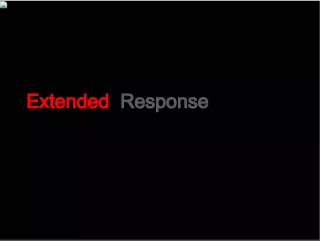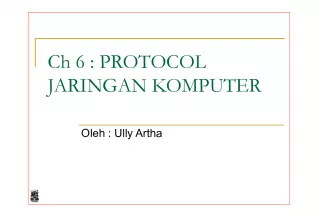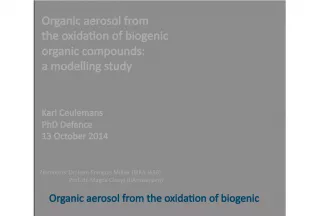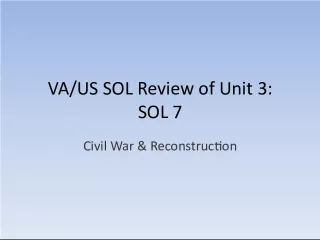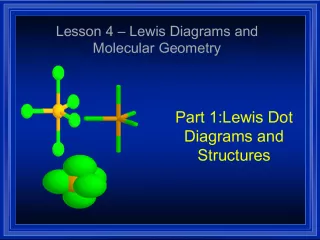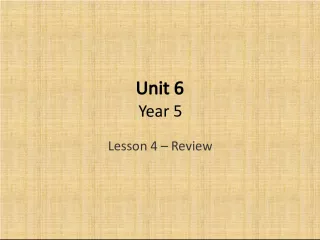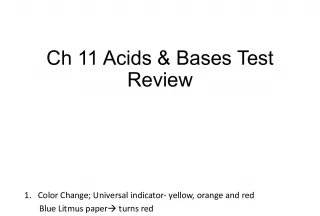May Chapter Review on Oxidation-Reduction Topic
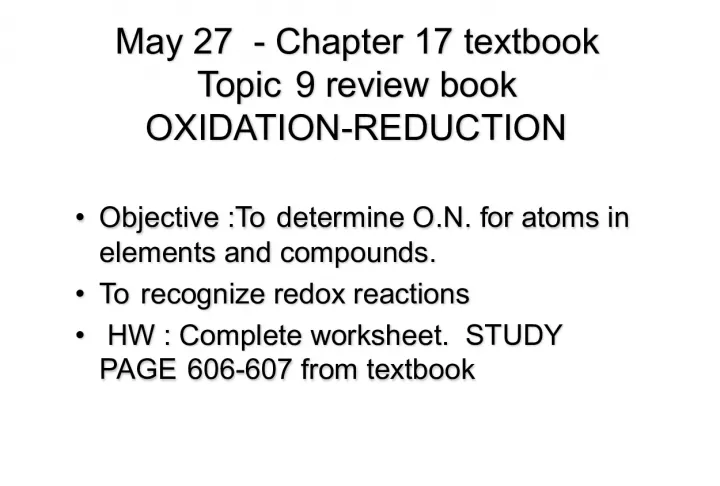

A comprehensive review of the Oxidation-Reduction topic covered in May's chapter of the textbook, aimed at helping students better understand the concept.
- Uploaded on | 0 Views
-
 ledamoura
ledamoura
About May Chapter Review on Oxidation-Reduction Topic
PowerPoint presentation about 'May Chapter Review on Oxidation-Reduction Topic'. This presentation describes the topic on A comprehensive review of the Oxidation-Reduction topic covered in May's chapter of the textbook, aimed at helping students better understand the concept.. The key topics included in this slideshow are . Download this presentation absolutely free.
Presentation Transcript
Slide1May 27 - Chapter 17 textbook Topic 9 review book OXIDATION-REDUCTION May 27 - Chapter 17 textbook Topic 9 review book OXIDATION-REDUCTION • Objective :To determine O.N. for atoms in elements and compounds. • Objective :To determine O.N. for atoms in elements and compounds. • To recognize redox reactions • To recognize redox reactions • HW : Complete worksheet. STUDY PAGE 606-607 from textbook • HW : Complete worksheet. STUDY PAGE 606-607 from textbook
Slide2DO NOWOBSERVATION SKILLS! • In your notebook record the experiment in words and then describe the experiment like a chemist (with a CHEMICAL REACTION! )
Slide3•Indicate the metal and the non metal • How metals react? • How non metals react? • Review : draw the dot diagram for each element, and for the compound formed • How many electrons and protons in each reactant? • How many electrons and protons in each element in the product?
Slide4REDOX REACTIONS (electron transfer reactions) REDOX REACTIONS (electron transfer reactions) • Whenever an atom loses an electron another atom has to gain one. Both reactions are simultaneous. • Whenever an atom loses an electron another atom has to gain one. Both reactions are simultaneous. Mg + O 2 MgO Mg + O 2 MgO Magnesium lost 2 electrons because oxygen took them. The metal LOST electrons, the NON METAL GAINED electrons Magnesium lost 2 electrons because oxygen took them. The metal LOST electrons, the NON METAL GAINED electrons
Slide5What happens to a car whenthe paint chips off?
Slide6LEO GER LEO GER L osing L osing E lectrons is E lectrons is O xidation. O xidation. G aining G aining E lectrons is E lectrons is R eduction R eduction
Slide7OIL RIG OIL RIG • O xidation • O xidation • I s • I s • L oss. • L oss. • R eduction • R eduction • I s • I s G ain. G ain.
Slide8REDOX REACTIONS• REDuction – OXidation reactions • Electrons are transferred from the element that is being oxidized to the one that is being reduced.
Slide9Oxidation Number (O.N.) Oxidation Number (O.N.) • Chemist use the O.N. to determine how many electrons are either gained or lost by an atom or ion in a chemical reaction. • Chemist use the O.N. to determine how many electrons are either gained or lost by an atom or ion in a chemical reaction. • O.N. is the charge or partial charge of an atom in a compound or an ion. • O.N. is the charge or partial charge of an atom in a compound or an ion.
Slide10RULES FOR ASSIGNING O.N. RULES FOR ASSIGNING O.N. 1. For all uncombined elements O.N. = O (FREE ELEMENTS) 1. For all uncombined elements O.N. = O (FREE ELEMENTS) 2. For monoatomic ions the charge equals O.N. 2. For monoatomic ions the charge equals O.N. 3. Metals of group 1 in compounds O.N.= +1. 3. Metals of group 1 in compounds O.N.= +1. Metals of group 2 in compounds O.N.= +2 Metals of group 2 in compounds O.N.= +2
Slide114. Fluorine in compounds is always – 1. 4. Fluorine in compounds is always – 1. Other halogens -1 in binary compounds with metals. Other halogens -1 in binary compounds with metals. 5. Hydrogen + 1 except in metal hydrides (combined with metals of group 1 or 2) 5. Hydrogen + 1 except in metal hydrides (combined with metals of group 1 or 2) 6. Oxygen is -2 except when combined with F (is =2) or in peroxides (-1). 6. Oxygen is -2 except when combined with F (is =2) or in peroxides (-1).
Slide12•7. THE SUM OF THE OXIDATION NUMBERS IN ALL COMPOUNDS MUST BE ZERO • 7. THE SUM OF THE OXIDATION NUMBERS IN ALL COMPOUNDS MUST BE ZERO • 8. FOR POLYATOMIC IONS THE SUM OF THE O.N. IS EQUAL TO THE CHARGE OF THE ION • 8. FOR POLYATOMIC IONS THE SUM OF THE O.N. IS EQUAL TO THE CHARGE OF THE ION
Slide13Group work• Get in your groups and practice what you just have learnt and complete handout. • Finish the rest for homework.
Slide14Answer to finding the Oxidationstate 1. +7 2. +5 3. +5 4. +7 5. +4 6. +6 7. +2 8. +3 9. +5 10. +3 11. +6
Slide15ReviewFind the O.N. for each element • Cl 2 • K 2 S 2 O 3 • NO 3 - • PO 4 3- • CaCr 2 O 7 • KNO 2 • OF 2 • H 2 O 2 • KH
Slide16May 28 May 28 • Objective: How to keep track of electron transfers in chemical reactions? • Objective: How to keep track of electron transfers in chemical reactions? • HW: finish worksheet • HW: finish worksheet • Answer question 11 to 31 in page 162 RB • Answer question 11 to 31 in page 162 RB
Slide18VOCABULARY• SIMULTANEOUS = at the same time • OXIDATION = to lose electrons • REDUCTION = to gain electrons • OXIDATION NUMBER = charge or partial charge over an element.
Slide19DO NOWOBSERVATION SKILLS! • In your notebook record the experiment in words and then describe the experiment like a chemist (with a CHEMICAL REACTION! )
Slide20PRACTICE• HCl + Mg -> MgCl 2 + H 2 • Indicate the oxidation state of each element in the reaction.
Slide21To recognize redox reactions… To recognize redox reactions… • Look for changes in the oxidation number or the atoms. If one element changed the O.N. then for SURE is a redox reaction. • Look for changes in the oxidation number or the atoms. If one element changed the O.N. then for SURE is a redox reaction. • All single replacement, synthesis, decomposition and combustion reactions are REDOX. • All single replacement, synthesis, decomposition and combustion reactions are REDOX. • Double replacement reactions are not redox. • Double replacement reactions are not redox.
Slide22PRACTICE – your turn!• Get in pairs and work with the reactions in the handout (section # 7). Determine the O.N. for each element and decide which element got oxidized and which got reduced (TIP : LOOK ALWAYS IN THE REACTANTS SIDE!!!)
Slide23AGENTS• They are always the REACTANTS!!!
Slide24REDUCING AGENT• When a substance is oxidized it LOSES electrons. Its O.N. increases. It is being oxidized and is making the other substance in the reaction reduced. Then the one that gets oxidized is the REDUCING AGENT. Its O.N. increases. It is being oxidized and is making the other substance in the reaction reduced. Then the one that gets oxidized is the REDUCING AGENT. R.A. gets oxidized. R.A. gets oxidized. Its O.N. increases Its O.N. increases Active metals are good RA Active metals are good RA
Slide25OXIDIZING AGENTSIts O.N. decreases . By being reduced, it takes electrons from the other specie, it makes the other specie to get oxidized. • When a reactant is reduced it GAINS electrons. Its O.N. decreases . By being reduced, it takes electrons from the other specie, it makes the other specie to get oxidized. • The reactant that gets reduced is the OXIDIZING AGENT. • The reactant that gets reduced is the OXIDIZING AGENT. • Oxidizing Agent : Reactant that gets reduced - Its ON decreases. • Oxidizing Agent : Reactant that gets reduced - Its ON decreases.
Slide26Reducing Agents• Is the reactant that gets oxidized and makes the other reactant get reduced. • Since it gets oxidized its ON increases.
Slide27•2Mg + O 2 MgO • 2Mg + O 2 MgO • Mg: oxidation number changes from • 0 to +2 . It increased. • Mg gets oxidized. Is the reducing agent. • Oxygen: Oxidation number changes from 0 to -2 , it decreases is the Oxidizing agent.
Slide28P 162 answers( identifyingAgents) 11) 2 12) 1 13) 2 14) 2 15) 1 16) 3 17) 3 18)4 19)1 20)2 21)4 • 22)2 32)1 • 23)3 • 24)1 • 25)2 • 26)1 • 27)3 • 28)2 • 29)1 • 30)3 • 31)2
Slide29May 29• How to recognize oxidizing and reducing agents? More practice • How to separate a redox reaction into half reactions? • Hw p 164 q 32 to 36 • Do Now • Find the ON of P in Calcium Phosphate
Slide30ANSWERS TO REDOXWORKSHEET 1 • 1a) zero • b) the charge of the ion • c) zero • d) the charge of the ion • 2 a) +4 b) 0 c) +3 d) +5 e) +3 f)+5 • 3 a)S +3 O -2 b) Cl 0 • c) C +4 O -2 d)N +6 O -2 • e) K +1 Cl -1 f)He 0 g) N +4 O -2 • h ) H +1 N -3
Slide31Half reactions Half reactions • A redox reaction can always be broken down as 2 half reactions that show the atom or ion that is being oxidized and the one that is being reduced. • A redox reaction can always be broken down as 2 half reactions that show the atom or ion that is being oxidized and the one that is being reduced. • MASS AND CHARGE has to be conserved in a half reaction • MASS AND CHARGE has to be conserved in a half reaction • 1. find the o.n. of each element in the reaction. Determine which is being reduced an which is being oxidized • 1. find the o.n. of each element in the reaction. Determine which is being reduced an which is being oxidized
Slide32•2. Balance the masses first • 2. Balance the masses first • 3. Complete each half reaction with electrons.( LEO GER) • 3. Complete each half reaction with electrons.( LEO GER) • 4. Verify that masses and charges are balanced. • 4. Verify that masses and charges are balanced.
Slide33May 30 May 30 • Objetive: Spontaneous Redox Reaction • Objetive: Spontaneous Redox Reaction • To use table J to predict if a single replacement reaction will occurr. • To use table J to predict if a single replacement reaction will occurr.
Slide34Answers RB Page 164Half reactions 32) 1 33) 3 34) 3 35) 2 36) 4
Slide35Take home testRedox Chapter • Do Practice Questions for New York Regents Exam. Page 169 Review Book • Questions 1to 30 MC in scantron. Begin using scantron at Q 51. • Answer questions 31, 32 and 34 in the green box in the scantron sheet. • You MUST hand in the scantron sheet as you walk into the classroom Monday June 3!!!
Slide36Activity series Activity series • Spontaneous Reactions : happen without external help . • Spontaneous Reactions : happen without external help . CuSO 4 + Zn Zn SO 4 + Cu CuSO 4 + Zn Zn SO 4 + Cu • In a single replacement reaction the most active element replaces the other element from a compound. (TABLE J) • In a single replacement reaction the most active element replaces the other element from a compound. (TABLE J)
Slide37Table J Table J • The metal above gets oxidized the one below will get reduced. • The metal above gets oxidized the one below will get reduced. • For non metals the one above gets reduced the one below gets oxidized. • For non metals the one above gets reduced the one below gets oxidized.
Slide38•F 2 + NaCl • F 2 + NaCl • I 2 + NaCl • I 2 + NaCl • Cl 2 + Na I • Cl 2 + Na I
Slide39METALS IN TABLE J METALS IN TABLE J • The higher the metal is in table J, the most active it is, the more tendency to became oxidized (lose electrons) • The higher the metal is in table J, the most active it is, the more tendency to became oxidized (lose electrons) • On Top of table J best reducing agents • On Top of table J best reducing agents • Towards the bottom metals tend to gain electrons then they became reduced and are good reducing agents • Towards the bottom metals tend to gain electrons then they became reduced and are good reducing agents
Slide40Non Metals Non Metals • F 2 has the greatest tendency to gain electrons ( became reduced) is the BEST OXIDIZING AGENT. • F 2 has the greatest tendency to gain electrons ( became reduced) is the BEST OXIDIZING AGENT.
Slide41Predict if the reaction will occur Predict if the reaction will occur • Ag (NO 3 ) + Cu • Ag (NO 3 ) + Cu • Zn +2 + Co • Zn +2 + Co • MgCl 2 + Ni • MgCl 2 + Ni • K + FeCl 3 • K + FeCl 3 • Li + Mg 2+ • Li + Mg 2+
Slide42ELECTROCHEMISTRY• OBJECTIVE: To distinguish between electrochemical and electrolytic cells • To identify the different parts of a cell and explain their purpose.
Slide43Do now Do now • What SPONTANEOUS reaction would occur if we have • What SPONTANEOUS reaction would occur if we have • Cu, Cu 2+ , Zn and Zn 2+ together. • Cu, Cu 2+ , Zn and Zn 2+ together. • Hint USE TABLE J • Hint USE TABLE J • Where the electrons flow? Which loses which gains? • Where the electrons flow? Which loses which gains?
Slide44ElectrochemistryVoltaic Cells In spontaneous oxidation-reduction (redox) reactions, electrons are transferred and energy is released.
Slide45IDEA!IDEA! • If we can place the two metals in two different containers and connect them with a wire the electrons will flow from the Zn to the Cu and we will have an electric current – ELECTRICITY • If we can place the two metals in two different containers and connect them with a wire the electrons will flow from the Zn to the Cu and we will have an electric current – ELECTRICITY • But it does not work if we do not close the circuit – USE A SALT BRIDGE • But it does not work if we do not close the circuit – USE A SALT BRIDGE
Slide46Voltaic Cells• A typical cell looks like this. • The oxidation occurs at the anode . • The reduction occurs at the cathode .
Slide47ELECTRODES• Where the reduction or oxidation takes place. They are usually metals or they can be made of graphite. • RED CAT • REDuction at the cathode
Slide48ELECTROCHEMISTRYELECTROCHEMISTRY • *Anode: where the oxidation occurs. • *Anode: where the oxidation occurs. • *Cathode: where the reduction occurs. • *Cathode: where the reduction occurs. • Voltaic or galvanic cell : produce ELECTRICITY from an spontaneous chemical reaction. • Voltaic or galvanic cell : produce ELECTRICITY from an spontaneous chemical reaction.
Slide49•ELECTRON FLOW. FROM THE ONE THAT GETS OXIDIZED TO THE ONE THAT GETS REDUCED. • ELECTRON FLOW. FROM THE ONE THAT GETS OXIDIZED TO THE ONE THAT GETS REDUCED. • POLARITIES • POLARITIES • ANODE – NEGATIVE source of electrons • ANODE – NEGATIVE source of electrons • CATHODE- POSITIVE • CATHODE- POSITIVE
Slide50A typical voltaic cellCathode: the electrode at which reduction occurs Anode: the electrode at which oxidation occurs RED CAT REDuction at the cathode Salt bridge: a tube containing strong electrolyte, a pathway to allow the ions to move from one side to another. PERMIT THE MIGRATION OF IONS
Slide51Problems1. A cell uses the reaction Mn + Ni 2+ Ni + Mn 2+ to produce electricity. a) Write the half-reaction that occurs at the anode. b) Write the half-reaction that occurs at the cathode. c) Which species in this cell loses electrons? d) As the cell produces electricity, which ion increases in concentration? Mn Mn 2+ + 2e - Ni 2+ + 2e - Ni Mn Mn 2+
Slide521. Voltaic CellA type of electrochemical cell that converts chemical energy to electrical energy by a spontaneous redox reaction. In 1800, Volta built the voltaic pile and discovered the first practical method of generating electricity. Constructed of alternating discs of zinc and copper, with pieces of cardboard soaked in salt water b/w the metals, the voltaic pile produced electrical current.
Slide53 Electrochemical cell An apparatus that uses a redox reaction to produce electrical energy ( voltaic cell ) or uses electrical energy to cause a chemical reaction ( electrolytic cell ).
Slide54Electrolytic cell Electrolytic cell • Uses electricity to force a reaction that is not spontaneous to occur. • Uses electricity to force a reaction that is not spontaneous to occur. • NOTICE THAT IN ELECTROLYTIC CELLS THERE IS A BATTERY OR A POWER SOURCE PRESENT • NOTICE THAT IN ELECTROLYTIC CELLS THERE IS A BATTERY OR A POWER SOURCE PRESENT • Electrolysis : to decompose a substance using electricity • Electrolysis : to decompose a substance using electricity
Slide56ElectroplatingElectroplating Is used to cover an object with metal using electricity. Is used to cover an object with metal using electricity. • THE OBJECT TO BE COVERED GOES IN THE CATHODE • THE OBJECT TO BE COVERED GOES IN THE CATHODE • POLARITIES : ANODE – POSITIVE • POLARITIES : ANODE – POSITIVE • CATHODE- NEGATIVE SOURCE OF ELECTRONS – CONNECTED TO NEGATIVE • CATHODE- NEGATIVE SOURCE OF ELECTRONS – CONNECTED TO NEGATIVE
Slide58P 160 rb1) 1 2) 2 3) 4 4) 4 5) 3 6) 1 7) 4 8) 2 9) 1 10)2
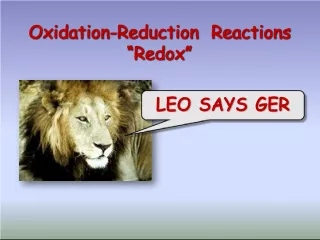
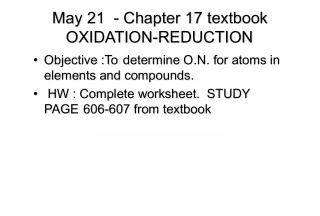
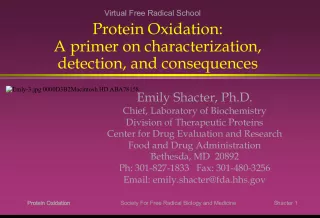
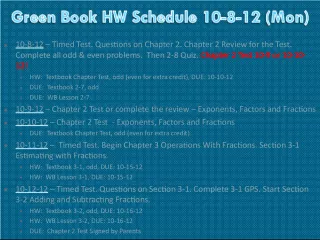
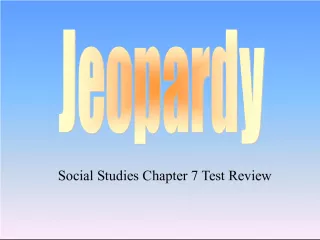
![Exploring [Topic]: Answers, Facts, Opinions, and Resources](/thumb/20000800/exploring-topic-answers-facts-opinions-and-resources.jpg)

